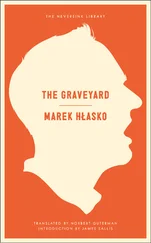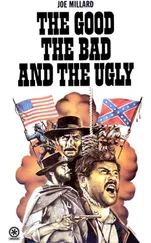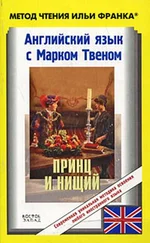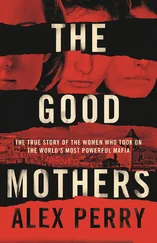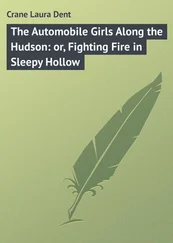Marek Edelman - The Ghetto Fights
Здесь есть возможность читать онлайн «Marek Edelman - The Ghetto Fights» весь текст электронной книги совершенно бесплатно (целиком полную версию без сокращений). В некоторых случаях можно слушать аудио, скачать через торрент в формате fb2 и присутствует краткое содержание. Жанр: Биографии и Мемуары, на английском языке. Описание произведения, (предисловие) а так же отзывы посетителей доступны на портале библиотеки ЛибКат.
- Название:The Ghetto Fights
- Автор:
- Жанр:
- Год:неизвестен
- ISBN:нет данных
- Рейтинг книги:3 / 5. Голосов: 1
-
Избранное:Добавить в избранное
- Отзывы:
-
Ваша оценка:
- 60
- 1
- 2
- 3
- 4
- 5
The Ghetto Fights: краткое содержание, описание и аннотация
Предлагаем к чтению аннотацию, описание, краткое содержание или предисловие (зависит от того, что написал сам автор книги «The Ghetto Fights»). Если вы не нашли необходимую информацию о книге — напишите в комментариях, мы постараемся отыскать её.
The Ghetto Fights — читать онлайн бесплатно полную книгу (весь текст) целиком
Ниже представлен текст книги, разбитый по страницам. Система сохранения места последней прочитанной страницы, позволяет с удобством читать онлайн бесплатно книгу «The Ghetto Fights», без необходимости каждый раз заново искать на чём Вы остановились. Поставьте закладку, и сможете в любой момент перейти на страницу, на которой закончили чтение.
Интервал:
Закладка:
In addition, the Jewish police also "helped", by charging incredible amounts of money, gold or valuables per "head" for a chance to escape. Those who were rescued, however, a comparatively insignificant number, usually showed up at the "Umschlag" for a second and third time, and finally disappeared into the fatal interior of a railroad car with the rest of the victims.
But people made frantic efforts to get out of the doomed place. They would cling to the coats of passing nurses begging for a white coat and storm the doors of the hospital guarded by Jewish policemen.
A father asks that at least his child be admitted. Dr. Anna Braude-Heller, Head of me Bersons and Baumans Hospital, takes it from his arms and forcibly pushes it past the protesting guard, into the hospital.
Helena Szefner, pale and beside herself, brought to the "Umschlag" after the last blockade, is also taken into the hospital by our comrades and is then, at the first opportunity, taken outside the walls on a doctor's certificate.
Janek Stroz is stopped by a Jewish policeman as he is about to be led out of the enclosure. It looks as if he is lost, but we terrorize the policeman just behind the gendarme's back and he lets Janek through.
It often happened that the messenger sent to help somebody to escape from the "Umschlag" was not only unable to complete his mission, but perished himself, swept with the crowd into a railroad car. Samek Kostryrski, one of our bravest sent to the "Umschlag" for some of our comrades, met death in such a manner.
The most important and most difficult thing in the "Umschlag" was to live through the time when the cars were being loaded. The transports left in the mornings and evenings. The loading took place twice daily. An endless chain of Ukrainians would encircle the square and the thousandfold crowd. Shots would be fired and every shot hit its target. It was not difficult to hit when one had within a few paces a thick, moving crowd, every particle of which was a living person, a target. The shots drew the crowd nearer and nearer to the waiting cattle cars. Not enough! Like mad beasts the Ukrainians ran through the empty square toward the buildings. Here a wild chase would begin. The frightened crowd hurried to the upper floors, gathered in front of the hospital doors, hid in dark holes in the attic. Just to get away, higher up, farther from the chase. One might be lucky enough to miss one more transport, save another day of life. Comrade Mendelson (Mendele) remained in an attic for three days. A few girls, Skif members, hid there for five days and were later led out with a group of nurses.
The Ukrainians did not exert themselves unnecessarily. The number of those who could not escape fast enough was always sufficient to fill the cars. The last moment before the departure, a mother is pushed into a car, but there is no more room for her child, which is pulled away from her and loaded farther down the line, in the next incomplete car. Resistance? An instant shot. Slowly, with difficulty, the doors close. The crowd is so thick that it has to be mashed in with the rifle butts. And then, the train starts. Fresh fodder for the Treblinka gas chambers is under way.
During this time we lost almost all of our comrades. Just a few dozen of our members remained from our original group numbering more than 500 people: the Hechalutz organization had better luck. It remained almost intact. They started a few fires for diversionary purposes and carried out an assault on the Jewish police commander, J. Szerynski.
The best from among us were deported in such a manner in the beginning of August 1942: S. Kostrynski, I. Szpilberg, Pola Lipszyc, Cywla Waks, Mania Elenbogen, Kuba Zylberberg were all sent out. Hanusia Wasser and her mother Mania Wasser perished, as did Halina Brandes and her mother. Comrade Orzech, sought by the Gestapo on several occasions, had to flee to the "Aryan side".
On August 13th, 1942, Sonia Nowogrodzka was taken from the W.C. Tobbens Factory. It was strange. Only two days previously Sonia, looking out the window at the crowd returning from work, had said: "My place is not here. Look who remains in the ghetto, only the scum. The working masses march in formation to the 'Umschlag'. I have to go with them. If I shall be with them, then, perhaps, they will not forget that they are human beings even during their very last moments, in the cars, and afterwards..."
A small handful of us remained. We did all we could, but only very little was possible. We wanted to save whatever we could at any price. We placed our people in German establishments, the very best it seemed. Just the same we began losing contact with one another. Only one larger group of comrades was able to keep together (20-25 people), the one at the "brushmakers' shops" at Franciszkanska Street.
This was our most tragic period. We could plainly see the slow disappearance of our whole organization. We could see that everything we had so carefully nursed through the long and difficult years of war was crumbling, part of the general desolation, that all our work and efforts were of no avail. It was mostly due to Abrasha Blum, to his composure and presence of mind, that we weathered the nightmare of those terrible times.
At about the middle of August, when only 120,000 people were left in the ghetto, the first part of the "action" appeared to have ended. The "Umsiedlungsstab" left Warsaw then without any instructions as to the future. But even now hopes proved futile. It quickly became clear that the Germans were using the short pause to liquidate Jewish settlements in nearby towns--Otwock, Falenica, Miedzeszyn. The entire staff and all the children of the Medem Sanitarium were deported from Miedzeszyn. Roza Eichner died a martyr's death.
After this temporary let-up, the deportations from Warsaw started again with intensified force. Now the blockades were even more dangerous for us, because there were fewer people and the area had become smaller. They were also more difficult for the Germans, however, because people had already learned how to hide. Therefore, a new method was used: every Jewish policeman was made responsible for bringing 7 "heads" daily to the "Umschlag". And this is how the Germans were playing their best game. Never before had anyone been so inflexible in carrying out an action as a Jewish policeman, never before had anyone been so unyielding in holding on to a captured victim as one Jew in relation to another Jew. So that they might furnish the 7 "heads", Jewish policemen would stop a doctor in a white coat (the coat could be sold for a fantastically high price later, in the "Umschlag"...), a mother with her child in her arms, or a lonely, lost child in search of its home.
Yes, the Jewish police certainly wrote their own history by their deeds.
On September 6th, 1942, all remaining ghetto inhabitants were ordered to report to an area bounded by the following streets: Gesia, Zamenhofa, Lubeckiego, Stawki. Here the final registration was to take place.
From all directions people march, four abreast, to the designated spot. All our friends are here, too. We hear Ruta Perenson tell her little Nick: "You must not be afraid of anything. Terrible things are going to happen soon. They want to kill us all, but we shan't let them. We shall hit them just as badly as they hit us... "
This, however, did not happen. The entire ghetto population was assembled in the small rectangle of the designated block: the workers of the plants, the Jewish Council employees, the public health workers, the hospital workers (the sick were sent directly to the "Umschlag"). The Germans named a limited number of people who were permitted to remain in every German establishment, and in the Jewish Council. These chosen individuals received numbered slips of paper, a guarantee of life. The chances of receiving such a life-insuring slip of paper were almost nil, but the mere fact that such chances did exist was sufficient to confuse people, to cause their attention to converge solely on the means of securing the numbered slip. Everything else was suddenly of no importance. Some fought for the piece of paper loudly, shrilly at tempting to prove their right to live. Others, tearfully resigned, meekly awaited their fate. The last selection took place in a state of utmost tension. After two days, every hour of which seemed to last ages, the chosen ones were escorted back to their places of work, where they were henceforth to be billeted. The remainder was led to the "Umschlag". The last to arrive here were the families of the Jewish policemen.
Читать дальшеИнтервал:
Закладка:
Похожие книги на «The Ghetto Fights»
Представляем Вашему вниманию похожие книги на «The Ghetto Fights» списком для выбора. Мы отобрали схожую по названию и смыслу литературу в надежде предоставить читателям больше вариантов отыскать новые, интересные, ещё непрочитанные произведения.
Обсуждение, отзывы о книге «The Ghetto Fights» и просто собственные мнения читателей. Оставьте ваши комментарии, напишите, что Вы думаете о произведении, его смысле или главных героях. Укажите что конкретно понравилось, а что нет, и почему Вы так считаете.

